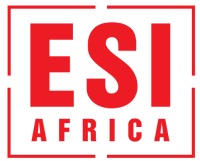South Africa: Coal to remain central to energy mix to at least 2040
Newly appointed FutureCoal chairman and Seriti Resources CEO Mike Teke pushed back against what he called the “coal closet” mentality
Coal will continue to play a central role in South Africa and other coal-producing nations for at least the next 15 to 20 years, despite global pressure to accelerate the energy transition.
Unequivocal in this assertion, newly appointed FutureCoal chairman and Seriti Resources CEO Mike Teke pushed back against what he called the “coal closet” mentality, where investors, insurers and listed companies downplay or hide their involvement in the sector.
Coal is here to stay – Teke
In an interview with ESI Africa a few days after he was announced as the new FutureCoal chair, Teke said the resource is here to stay for the foreseeable future.
“You need to make a decision that I am invested in coal. I believe in coal, but I understand it’s a fossil fuel, it’s an emitter and it creates challenges on climate issues and global warming.
“[But] because of the reality we face as a country or as a continent, it is unrealistic to shut coal mines and coal-fired power stations now.”
Teke forecast that coal use in countries such as South Africa, India, Indonesia, Australia and China would plateau rather than collapse, with a gradual transition stretching to 2040.
Questions remain over the scope of renewable energy sources
He noted that renewables are expanding rapidly, but challenges around intermittency and baseload supply remain.
“We are not going to switch off coal between now and 2040. In countries that are producing coal, we will continue to supply into our markets for the coming 15 to 20 years,” he said.
He argued that the coal sector’s future lies in “sustainable coal stewardship,” including investment in high-efficiency, low-emission technologies, carbon capture, utilisation and storage.
He also pointed to Seriti’s own diversification, with the company developing the Ummbila Emoyeni wind energy facility – 750MW wind, 150MW solar and 800MWh of battery storage – in Mpumalanga.
“If you were to fly over, you would see a coal mine, a green energy farm and Sasol’s coal-to-liquids plant side by side. That is the transition,” he said.
Finance priorities questioned
Teke criticised elements of international climate finance for prioritising coal closures over socio-economic realities.
“Countries came to us and said, ‘We’ll give you $8.5 billion if you accelerate the transition.’ But acceleration meant shutting down coal-fired power stations. Do you care about employment, about communities where these coal mines and power stations are? That money goes to their suppliers, and we are left with debt for future generations.”
He also noted signs of a shift in global finance.
While many banks and insurers had withdrawn from coal in line with the Paris Agreement, some have recently left initiatives such as the Net-Zero Banking Alliance.
Have you read? South Africa: Coal output, exports to rise despite global downturn
“There’s some vacillation I’m seeing. Insurers are starting to say’maybe, if you invest in carbon capture and storage… we will think about insuring you’,” he said.
Teke said that coal’s role in Africa cannot be wished away. “We are facing climate change, I agree. But remember, we’re facing poverty as well.”
Diversification of energy sources
In November 2021, Seriti Resources launched Seriti Green to diversify into renewable energy as part of a just transition strategy.
Last week, Minister of Electricity and Energy Kgosientsho Ramokgopa visited the Seriti Ummbila Emoyeni wind energy facility in the Lekwa Local Municipality of the Mpumalanga Province to see its progress.
It is the company’s first utility-scale wind farm and is paving the way for 4GW of planned renewable-energy capacity by 2027.
The wind plant will supply up to 75% of Seriti’s coal operations with renewable energy via Eskom’s grid, reducing carbon emissions by approximately 5.1 million tonnes per year, the company said previously.
“This project not only highlights South Africa’s commitment to renewable energy but also serves as a vital part of our national strategy to transition to cleaner energy sources and reduce our carbon footprint,” said Ramokgopa during the visit last week.
“With a total of 900MW (750MW of wind and 150MW of solar) and 800MWh of battery storage located 20 kilometres from the nearest coal power station.
“This is a true version of a Just Energy Transition, It dismantles the toxic binary public narrative that pits technologies against each other.”
Take reported previously that the Ummbila Emoyeni site employs 729 people, of which 58% come from local communities.
A key milestone was achieved with the delivery of the 500MVA, 400/132/22kV Vunumoya power transformer in November, which will form the backbone of the project’s main transmission station.
In July, Teke said that the facility’s fourth wind turbine “is probably on its way up.”
It is interesting to note that G20 Ministers, under the South African presidency of the international forum, will convene in Mpumalanga, South Africa’s coal heartland, from September 23 to 26 to discuss the energy mix, lower carbon-emitting technologies and other aspects of the just energy transition (JET). ESI
Cover photo: FutureCoal’s new chair Mike Teke, left, with South Africa’s Minister of Electricity and Energy Kgosientsho Ramokgopa in Mpumalanga last week. Source: Kgosientsho_R/X


